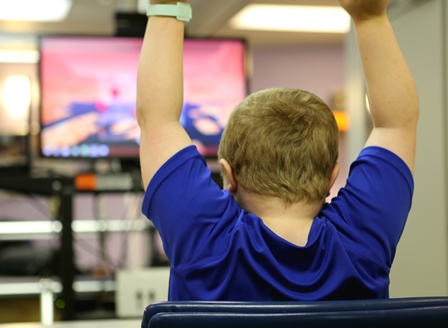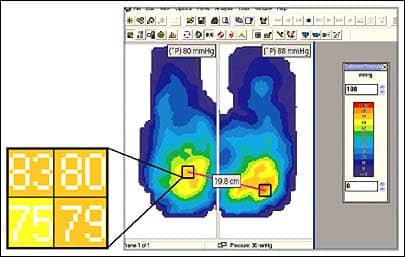
Cole Eichelberger, age 13 years, participates in the testing of a new video game that potentially will open the door for wheelchair-bound children to participate in clinical trials for which they otherwise would be required to walk.
Duchenne muscular dystrophy (MD) can confine children to a wheelchair, thereby excluding them from participating in clinical trials. Recently, however, a Kinect-based video game was used to measure movement among the upper extremities of children affected by Duchenne MD, and thus opens the discussion about whether they may participate in future clinical trials.
For many types of testing associated with Duchenne MD, a child is required by the Food and Drug Administration to be able to walk for at least 6 minutes.
The ability to track upper extremity movement with tests that are repeatable and reliable, such as game scores, raises the possibility of expanding the inclusion criteria for clinical trials and, thus, including study subjects who use wheelchairs. According to a media release from Nationwide Children’s Hospital (NCH), headquartered in Columbus, Ohio, researchers based at NCH conducted a study in which they determined the scores children achieved by playing a video game closely echoed each child’s daily activity, mobility, social and cognitive skills, as reported by the child’s parents.
Linda Lowes, director of clinical therapies at NCH characterized the test results as “very reliable,” and notes that the scores reflect the degree of mobility the study subjects were able to demonstrate in everyday tasks. Sixty-one subjects participated in the study.
See video of a pediatric wheelchair patient using the game here.
According to the NCH media release the key technology for this trial is Ability Captured Through Interactive Video Evaluation (ACTIVE), a seated technology. The device is designed to utilize a Kinect gaming camera, which is an accessory for Xbox consoles. Using a zombie theme, the game requires the user to reach with the arms in various directions to push forward a “force field.” The Kinect camera and ACTIVE-seated software reportedly measures how far and how long the users reach.
The primary goal of using the device is for clinical staff to measure change over time is a primary goal. Development of the game reportedly relied almost entirely on the patients.
In the NCH media release Lindsay Alfano, a physical therapist at the facility states, “The game allows [the user]s to disintegrate aliens, which they love. In clinical trials we need to see that they’re getting better with all of their activities. They have to spend hours with us doing nothing that’s easy, only hard things.
“Looking at their faces after they play this game where they get to just play and be kids is a lot of fun to see,” Alfano says.
Alfano states that as a clinical trial outcome measure, the researchers wanted the process to be as universal as possible. “We want to be able to use this across sites, both in the U.S. and internationally, because most of the clinical trials are international at this point. Having something that’s commercially available, low cost and easy to implement was really a huge goal for us,” Alfano says.
—Frank Long, editorial director, Rehab Management





